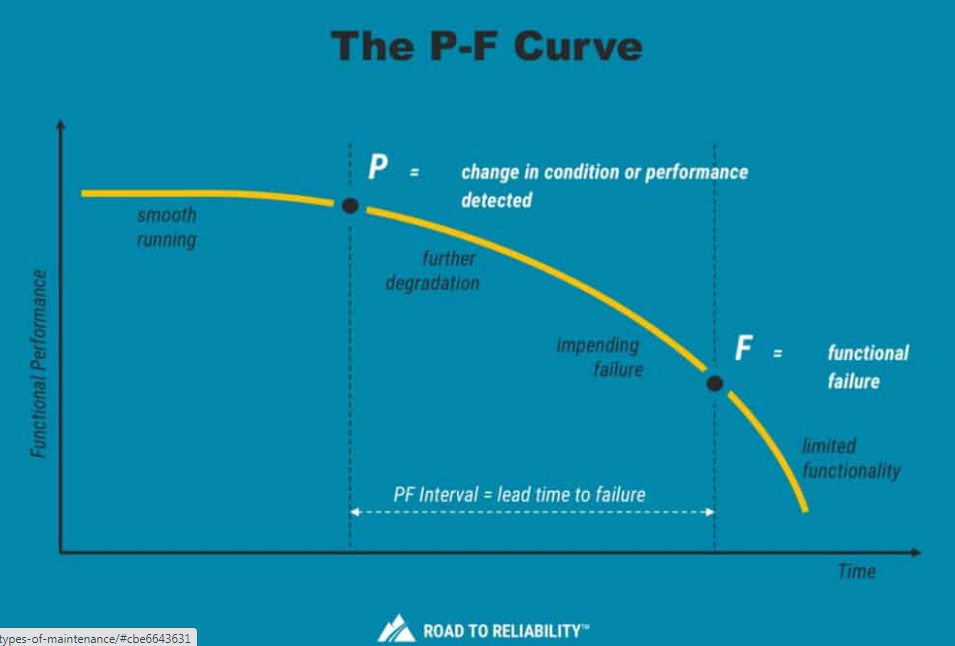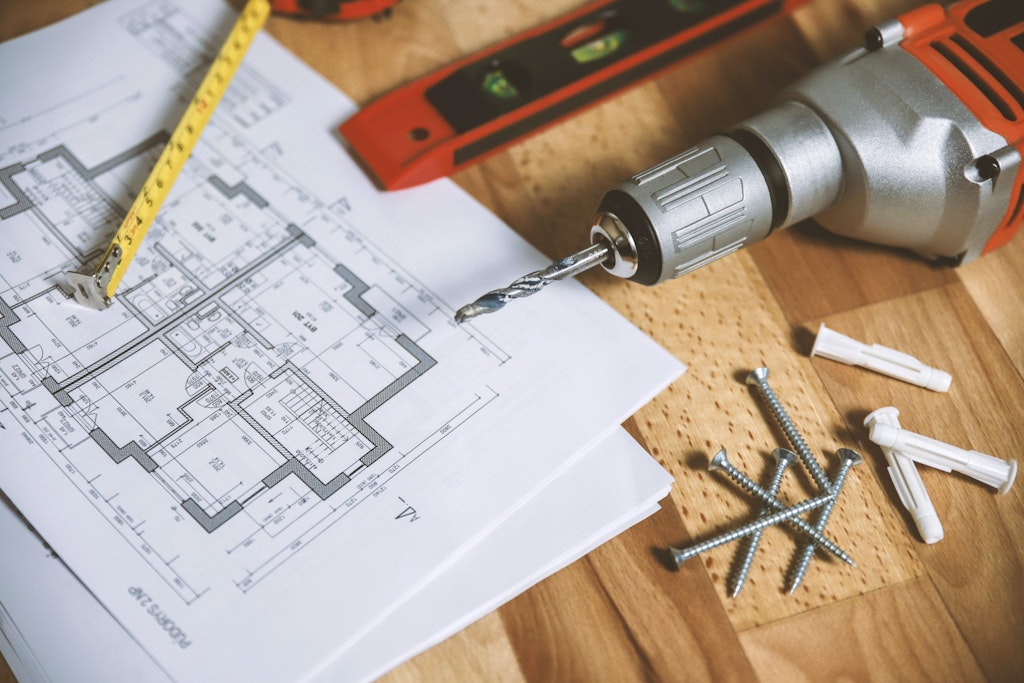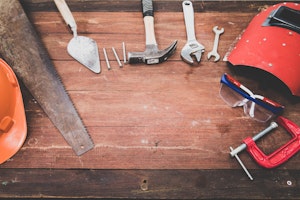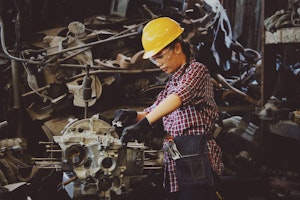One unavoidable aspect of running a business is dealing with regular maintenance of your assets, equipment, and property. Unfortunately, your frequently-used equipment will occasionally malfunction, fail, or slow down over time due to natural wear and tear (but you can take steps to lengthen the lifespan of your business’s most essential assets, as we’ll discuss later on).
This article targets the different types of maintenance you’ll face as a business owner or manager, namely proactive maintenance strategies and responsive maintenance strategies. Within these groupings, we’ll cover several specific types of maintenance, including preventive, predictive, planned, condition-based, reactive, emergency, and corrective maintenance. We’ll talk more about what these different types of maintenance entail, what they cost, and how they’ll contribute to your business’s success in the long run.
Proactive Maintenance Strategies
Preventive Maintenance
What is it?
Preventive maintenance is defined as taking precautionary steps or actions to prevent equipment failures before they actually occur. Preventive maintenance typically involves routine inspections, upgrades, proper lubrication (where applicable), adjustments, and replacement of outdated equipment or parts.
Preventive maintenance can be implemented in many areas of your business, and includes any preventive action, such as changing water filters, regularly cleaning essential equipment (such as refrigerator condenser coils), inspecting business vehicles (i.e. delivery vans), and checking grout and caulking to protect a property against water damage.
The preventive maintenance you perform, of course, will be specific to your business, and should always involve close inspection of your biggest assets, or the most valuable equipment for daily operations.
Benefits
A few benefits of preventive maintenance include:
- Minimized downtime and business closures due to unexpected equipment failures – This will help you avoid financial loss, and protect your bottom line.
- Increased life expectancy of essential equipment and assets – Inspecting, updating, and caring for your business’s assets will result in less money spent on new equipment in the long run.
- Decreased energy consumption for your business’s assets – When equipment runs optimally, less energy is required, which means lower utility bills for your business.
Cost of Implementation – ($$)
Some preventive maintenance actions require planning, which can either take time away from the day-to-day of your business or result in money spent on inspections and upgrades. For regular preventive maintenance actions, you’ll have an increase in labor costs in order to have on-site technicians who can perform such actions, rather than contracting a technician every now and then. This, of course, may depend on your unique business’s size, needs, and budget.
Relevant Industries For Preventive Maintenance
Preventive maintenance is pretty universal, and should be considered in any industry, including but not limited to manufacturing, food production, oil & gas, restaurants, gyms, retail, education, and healthcare.
Example of Preventive Maintenance
An unexpected refrigerator breakdown can leave a restaurant reeling, resulting in considerable food loss, closing for the rest of the day (or the time it takes to schedule and make repairs), and high repair costs. Performing regular inspections and cleaning of the condenser coils will help prevent such a costly incident from occurring, and will mean less risk to your business in the long run.
Predictive Maintenance
What is it?
Predictive maintenance tracks the normal operation of an appliance or machine to detect possible defects before they pose a problem. This type of maintenance uses condition-monitoring technology to measure the performance of equipment, typically by way of IoT (the Internet of Things).
IoT is more or less a system that connects electronic devices to mechanical and digital machines, and is equipped with the ability to detect and transfer data without requiring human interaction or interference. This means that predictive maintenance will alert you to possible machine deficiencies without any prompting on your end.
General examples of predictive maintenance include equipment observation, oil analysis, and sensors for energy usage.
Benefits
One of the biggest reasons predictive maintenance is so valuable is because it allows for maintenance to be performed only when absolutely necessary—that is, just before equipment failure is likely to occur. This means:
- Less money spent on preventive maintenance for a machine that doesn’t need it – Predictive maintenance will enable you to save money until the very last minute, when maintenance or repairs are actually required but before any real system damage occurs (resulting in business shut-downs and mechanism breakdowns).
- Fewer production hours lost as a result of equipment failure – The accurate technology of predictive maintenance means that you’ll avoid total machine failure, which can be a hard hit to standard operations if the machine in question is integral to your business.
- A tenfold increase in ROI, and significant maintenance and downtime reductions – Predictive maintenance is shown to contribute to a phenomenal tenfold increase in return on investment, as well as a 70-75% decrease in equipment crashes and a 35%-45% reduction in downtime. The stats don’t lie!
Cost of Implementation – ($$$$)
Unfortunately, one of the biggest—and possibly only—drawbacks of predictive maintenance is high upfront costs. Predictive maintenance requires a level of technology that standard preventive maintenance does not, and may also require employees who can accurately interpret the condition monitoring data. This might even mean that you’ll need to consider hiring someone on a part-time basis, solely to read and relay this data. Thus, to determine whether predictive maintenance is right for you, you’ll need to keep budgetary considerations in mind.
Relevant Industries For Predictive Maintenance
The industries that rely on predictive maintenance usually have equipment that are critical to their operations and have failure modes that can be predicted with regularly monitoring. Industries that can fit this criteria includes food production, oil and gas, manufacturing, power and energy plants, IT, etc.
Example of Predictive Maintenance
A food production plant may rely on predictive maintenance for their valuable industrial ovens, which may be running 24/7 to stay competitive. A sensor would be installed to the oven that would evaluate and produce data regarding temperature and vibration that would alert staff to make adjustments or tweaks to poor performing machines in real-time, reducing the need to shut down production completely.
Planned Maintenance
What is it?
Planned maintenance covers any maintenance that is planned, scheduled, and documented. It is specifically defined as, preventive maintenance that is carried out according to a set plan.
Basically, planned maintenance is implemented to reduce business downtime, which often stems from unforeseen equipment failures and can greatly impact a business’s bottom line. Should such a failure occur, any plan or strategy that would get the equipment in question up and running again would be a type of planned maintenance.
Preventive maintenance is one type of planned maintenance, and will account for and prevent machine breakdowns before they occur (as discussed in detail further up). There is also planned, unscheduled maintenance, which is the process of correcting or fixing a system that has already broken, and anticipating such business hindrances ahead of time. For example, if you manage a fleet of cars, having spare batteries on hand so replacing a broken battery would be quick and easy for a technician.
Benefits
Planned maintenance is relatively simple to implement, and is generally pretty cost-effective. Benefits include:
- Preparedness in the event of equipment failure, or preventing such failure altogether – If possible, it’s always a good idea to be prepared with backup supplies or an action plan in the event of a breakdown. Preparing accordingly for these rare occurrences could save production time and money.
- Planned maintenance is often as simple as a regular, planned inspection, seasonal maintenance, etc. – Much like preventive maintenance, planned maintenance isn’t particularly hard to pull off. Following manufacturer recommendations for equipment inspections, or calling a technician to update essential systems as needed, is often worth the short-term splurge.
- Significant cost savings in the long run – The cost of regular, routine maintenance often costs less in the long run than dealing with a major problem after it has occurred.
Cost of Implementation – ($$)
The cost of carrying out planned maintenance services isn’t very high. Of course, this depends on the machine or equipment that needs inspection or servicing. Emptying grease traps in restaurants, for instance, is much less costly than some HVAC inspections are.
Relevant Industries For Planned Maintenance
Planned maintenance is universal for all industries, and should be considered in manufacturing, restaurant (food & beverage), hospitality, gym and wellness centers, retail, and schools, to name a few.
Example of Planned Maintenance
It’s generally recommended that a restaurant checks and empties its grease traps every 1-3 months, depending on the size and volume of business. Doing so prevents sewer lines from becoming clogged with waste.
Condition-Based Maintenance
What is it?
Condition-based maintenance refers to the process of taking quick action on a machine that is in the early stages of equipment failure. Many machines produce some sort of alert that the system is beginning to malfunction before total breakdown occurs, and condition-based maintenance allows for a last-minute response to a system or machine crashing.
The following chart will help you better understand the process of condition-based maintenance in response to a machine’s decline:

Benefits
While condition-based maintenance needs a lot of data to be gathered, there are definite benefits to this technology, including:
- Reduced number of total machine breakdowns – When it’s all said and done, condition-based maintenance may help you avoid a total machine failure, which can result in having to spend top dollar on a last-minute replacement.
- Equipment availability – If an essential piece of equipment were to suddenly go bust, this might result in losing a full day or more of production and sales while waiting to get it fixed, or until you can purchase a replacement. Successful condition-based maintenance means that you will have managed to prevent your equipment from totally failing, enabling it to function until you can troubleshoot more thoroughly.
- Advance warning of breakdown – This probably goes without saying, but a warning that a machine or system needs attention is preferable to losing its functionality all at once. If such notifications are standard for your machine, you may even have enough time to call a mechanic, rather than attempting to fix equipment on your own.
Cost of Implementation – ($$$-$$$$)
Condition-based maintenance can be a costly initial investment. If a machine doesn’t already come equipped with this type of technology, it can cost thousands to set it up, depending on the piece of equipment in question. Obviously, for machines that are less expensive than the installation process, it’s probably not a good idea to make the investment for that particular piece of machinery. However, if you do decide to install CBM technology, note that some companies have reported up to a 30% reduction in maintenance costs over time by taking this step.
Relevant Industries For Condition-Based Maintenance
Industries that typically have high cost equipment and are critical to operations. Most typically common in manufacturing, oil & gas, power and energy plants, and food production with heavy machinery.
Example of Condition-Based Maintenance
A sensor that measures vibrations of a rotating equipment can warn you when the moving piece starts to fall out of alignment and increase in vibration. This will cause the sensor to alert you when the vibration is out of the interval you set.
Responsive Maintenance Strategies
Now that we’ve covered some proactive maintenance strategies, we’re going to explore responsive maintenance, otherwise known as fire-fighting (responding to a system or machine breakdown once it has occurred).
Reactive Maintenance
What is it?
Reactive maintenance is any response or reaction to fixing a failed machine that needs repairs. It focuses on restoring broken equipment to normal operating conditions, if at all possible. This process typically requires a mechanic’s services, or manufacturer help, to repair the broken machinery, which may be quite costly depending on the urgency and extent of the request.
Benefits
Reactive maintenance is far from ideal, but there are still a few benefits:
- Lower upfront costs (no investment) – If you’re not investing in any type of preventive maintenance and wait for your equipment to fail before taking action, you’ll still be saving some money you would have spent on initial preventive maintenance costs.
- Less staff needed – If you’re not using a preventive maintenance plan for your assets, it generally takes less staff to manage equipment than it would to consistently analyze and respond to machine warnings and malfunctions.
- No planning time required – When equipment fails, it fails, and mechanics and technicians usually respond fairly quickly—all you have to do is wait for them to show up and fix it, no time required on your end.
Cost of Implementation – ($$-$$$$)
There’s no one-size-fits-all for reactive maintenance. It all boils down to how much your specific machine will cost to fix. Some machines may cost a significant amount of money to restore (and in that case, you may want to simply consider new equipment), while others may only cost a few hundred dollars. This is one reason why many businesses utilize some type of preventive maintenance strategy—the worse the equipment damage, the greater the repair costs.
Relevant Industries For Reactive Maintenance
Reactive maintenance is applicable to every industry, but is least used as a “strategy” in the manufacturing, oil & gas, and IT business, and is typically more common in the restaurant and retail industries. This, of course, depends on the cost of these businesses’ assets, and how much proprietors are willing to invest to protect pricey equipment upfront.
Example of Reactive Maintenance
If a restaurant refrigerator abruptly stops working, this can lead to food spoilage and may even cause the restaurant to shutdown for health reasons. A malfunctioning refrigerator could be detrimental to the restaurant as a whole, depending on how long the refrigerator is out of service.
Emergency Maintenance
What is it?
Emergency maintenance is similar to reactive maintenance—both processes require a last-minute response to the abrupt breakdown of equipment. However, emergency maintenance entails some type of threat to health and safety (e.g. a sudden chemical spillage in a manufacturing plant may require total evacuation of the premises, as well as alert the appropriate authorities).
Benefits
In general, having to perform emergency maintenance is not a situation you want to find yourself in. The mess is typically not worth the money you may have saved on planning and prevention. That said, two advantages include:
- No initial cost involved – You can’t always anticipate when or how a major threat to your business and staff may occur. Thus, aside from complying with standard health and safety requirements and taking normal precautions, investments don’t negate the possibility of freak accidents from occurring.
- No planning required – Again, this probably isn’t much of a “benefit” when you actually find yourself in a situation that poses a significant health risk to your business, staff, and customers, but the “upside” is that planning time is minimal for these types of occurrences.
Cost of Implementation – ($$$$)
Implementing emergency maintenance can be very expensive, interrupting not only the daily flow of your business but also costing a significant amount of money to execute. It’s not uncommon for emergency maintenance expenses to cost double the amount of a preventive maintenance strategy, since the response is so urgent and the nature of the maintenance is often extensive.
Relevant Industries For Emergency Maintenance
Industries that routinely use emergency maintenance include chemical and manufacturing plants, tenant buildings, and housing communities, to name a few.
Example of Emergency Maintenance
A sewer back-up that floods a tenant’s apartment could easily cost the facility thousands of dollars in repairs and property damage, and will most likely result in an evacuation from that apartment (and surrounding apartments).
Corrective Maintenance
What is it?
Corrective maintenance is best described as any action that targets and fixes a system malfunction so that the equipment can be restored to proper working order. Unlike reactive maintenance, it is not a strategy; rather, it is an action that targets a specific piece of equipment. Additionally, the defect may be caught or noticed before it causes a significant problem, or total equipment breakdown.
Benefits
Benefits of corrective maintenance include:
- Reduced duration of planned and unplanned downtime – Corrective action is typically taken quickly, meaning that equipment downtime is (hopefully) brief.
- Reduced cost and time of running a reactive maintenance strategy – Having a reactive maintenance strategy requires planning, which often comes with associated costs and time spent on strategizing rather than production. Corrective action, alternatively, is a quick corrective response to an isolated piece of equipment.
- Reduced cost of maintenance operations/reduced emergency maintenance orders – Items that require corrective action can escalate to emergency maintenance, if left unchecked. Performing corrective maintenance usually reduces the chances of emergency situations from occurring.
Cost of Implementation – ($$-$$$$)
Depending on the extent of repairs needed, corrective maintenance can be anywhere from moderately expensive to very expensive. If the repairs are easily-fixable and isolated, your total cost might not be much more than the initial investments of implementing a proactive maintenance strategy.
Relevant Industries For Corrective Maintenance
Any industry may use corrective maintenance, including restaurants, gyms, retail stores, schools, and corporate offices.
Example of Corrective Maintenance
If frost or ice builds up in a walk-in freezer, this can escalate into a costly consequence for a restaurant. Ice accumulation can interfere with optimal refrigeration, causing compressors to use more energy and run less efficiently. If ice has already built up in a commercial freezer, it should be thawed either by turning the system off temporarily, or by using a tool such as a hair dryer to expedite the process. This is one example of a totally cost-effective corrective maintenance action.
Each type of maintenance strategy has its benefits and drawbacks, and there is no one-size-fits-all when it comes to your business. Take some time to determine what will work best for you, and to successfully protect your business from costly maintenance and repairs.
Maintenance Applications
Facility Maintenance
What is it?
Facility maintenance ensures that all areas, assets, and structures within or around a facility are operating as optimally as possible for maximum efficiency and safety. Preventive maintenance is commonly used to maintain a facility’s asset such as HVAC machines and reactive maintenance is mainly used to keep the areas of a facility in good operating conditions such as painting of the walls.
Property Maintenance
What is it?
Property maintenance is best defined as any preventive or corrective maintenance action taken to keep a property fully functional, and operating in its best condition. Reactive maintenance is commonly used to respond to tenant’s request to repair items in their units and preventive maintenance is used to regularly inspect and replace filters in essential assets like an HVAC machine.
Found this post helpful? Share it:




